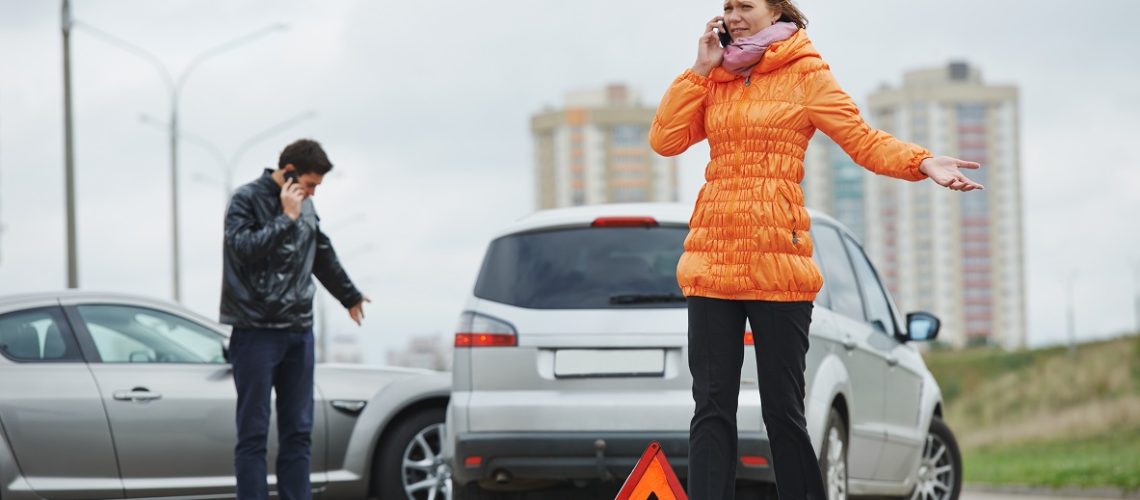- Assess the situation post-accident, call for emergency help if necessary, and move to a safe location.
- Evaluate and document any injuries; if injured, wait for emergency services without moving unnecessarily.
- Contact local emergency services if injuries or significant vehicle damage have occurred, providing detailed information.
- Exchange names, contact details, and insurance information with the other drivers and gather witness details.
- If injured or financially affected, consider seeking legal advice and understand your state’s statute of limitations.
Getting into a road traffic accident can be a traumatic and overwhelming experience. In addition to the physical injuries, financial, legal, and emotional stressors come. Knowing what to do in the aftermath of an accident can prove crucial in protecting your safety and well-being, as well as the safety of others.
After getting into an accident, the first thing to do is assess the situation. Ensure that you and the other parties involved are safe and receive medical attention if necessary. If you are not severely injured, collect evidence of the accident, such as photos, videos, and witness statements.
It is essential to prioritize your safety and well-being following an accident. This includes seeking medical attention, reporting the accident to the authorities, and exchanging details with the other parties involved. Doing so protects yourself and ensures the other parties receive the necessary assistance and support.
Assess the Situation
The first step in protecting yourself and others after an accident is to assess the situation. Check the extent of damage to the vehicles, and if anyone is injured, call for emergency assistance immediately. Try to stay calm and collected and take a few deep breaths.
Move to a Safe Location
It’s essential to move vehicles to a safe location after an accident. This will prevent any further collisions with oncoming traffic. If the vehicles can’t be moved, use flares, cones, or hazard lights to direct traffic around the accident scene.
Check for Injuries
After assessing the situation and moving to a safe location, the next step is to check for injuries. If anyone is hurt, immediately call emergency services for help. If you’re injured, stay in the car and wait for help. Don’t try to move unless it’s necessary.
Call for Emergency Assistance

If anyone is injured or there’s significant vehicle damage, it’s essential to call for emergency assistance immediately. Call 911 or the local emergency services number in your area and provide as much information as possible about the accident and the location.
Exchange Information
Once the emergency services have been called and the injured have been cared for, it’s time to exchange information. Get the other driver’s name, contact number, address, and insurance details. Gather the contact information of any witnesses who saw the accident, if possible.
Gather Details from Other Drivers and Witnesses
The more details you can gather about the accident, the easier it will be to settle any insurance claims. Talk to other drivers and witnesses and collect information about what happened before, during, and after the accident.
Share Your Information with Other Involved Parties
After gathering information, it’s time to share your information with the other involved parties. Give them your name, contact number, address, and insurance details. Let them know you’ll contact your insurance company to report the accident.
Document License Plate Numbers and Insurance Details
Finally, it’s essential to document license plate numbers and insurance details. Take pictures of the accident scene, the vehicles, and any damages to help your insurance provider evaluate your claim.
Consulting a Personal Injury Lawyer

If you have sustained physical injuries or incurred financial losses, consulting a personal injury lawyer may be beneficial. They can provide legal advice and represent you in the insurance claims process or legal proceedings if necessary.
Consider Seeking Legal Advice
It is vital to seek legal advice if you are unsure of your legal position following an accident. This includes understanding who is at fault, the potential liability of the parties involved, and the insurance claims process. Seeking legal advice can help you make informed decisions and protect yourself from any legal repercussions.
A personal injury lawyer can protect your rights and negotiate a fair settlement or compensation payout. They can investigate the accident, gather evidence, and represent you in the courtroom if necessary. By seeking legal representation, you are more likely to receive fair and just compensation for your injuries and losses.
Understand the Statute of Limitations for Filing a Claim
It is essential to understand the statute of limitations for filing a claim. This refers to the time frame within which a claim must be filed. If you fail to file a claim within the statute of limitations, you may lose your right to pursue compensation for your injuries and losses. Be sure to consult a lawyer to understand the statute of limitations in your state.
Being involved in a road traffic accident is a stressful experience, but taking the necessary actions after an accident can help protect yourself and others.
Remember to assess the situation, move to a safe location, check for injuries, call for emergency assistance, exchange information, gather details from other drivers and witnesses, share your information with other involved parties, and document license plate numbers and insurance details.

